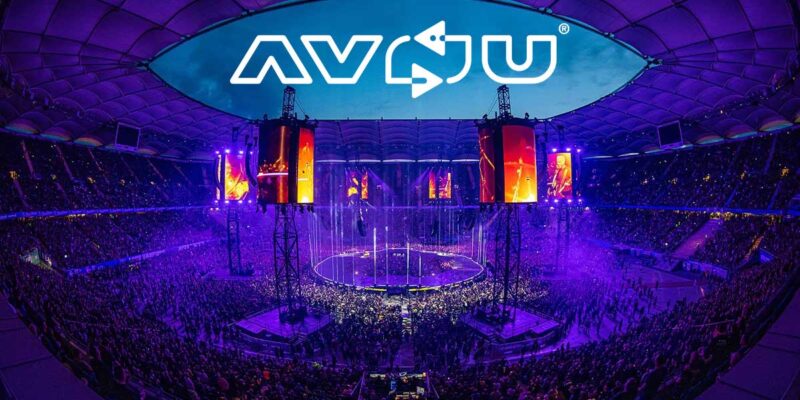How the Network Switch Became the Critical Component for Optimal AV Networking

By Chuck Brooks
Extreme Networks and the Avnu Alliance
No matter the application, today’s professional audiovisual (ProAV) networks are responsible for transmitting multiple streams of data — whether audio, video, show control or another crucial element — over shared infrastructure. While we’ve yet to fully move beyond isolated systems, completely converged networking is still rare in temporary systems, such as those used for touring. However, the increasing convergence of diverse media and control traffic is paving the way for more efficient delivery of time-critical data across many applications.
Pivotal to this shift has been the emergence of open standards for audio video bridging (AVB) and time-sensitive networking (TSN). As adoption of these standards grows, more organizations — including entertainment venues like stadiums — are benefiting from capabilities such as precise time synchronization, traffic shaping and bounded low latency. Derived from the work of the IEEE 802.1 Task Group, these features are essential for the coexistence and prioritization of time-sensitive streams alongside standard traffic. And the key to making it all work? The humble network switch.
An Evolving Role for Switches
Any given network has multiple endpoints, but this is especially true in ProAV. Whether it’s a concert or the Super Bowl, audio processors, cameras and lighting consoles all play critical roles. But the switches interconnecting those components ultimately dictate the network’s quality and reliability.
Not long ago, network switches were considered passive system elements — not disposable, but not especially noteworthy. Just network plumbing. Today, that’s no longer the case. Switches are a critical component, responsible for the determinism and redundancy required for modern AV networks. It’s no surprise the global network switch market is projected to reach $46 billion by 2030.
As switches have evolved, they’ve taken on more responsibility — managing multicast traffic and maintaining time synchronization protocols such as IEEE 802.1AS. These functions are not only essential for precise AV media delivery, but also for ensuring optimal quality of service.
Choosing the Right Solution
That said, switches alone can’t solve all network quality issues such as jitter or dropped packets. Human error — whether a misconfiguration or hardware mismatch — remains a factor, especially as networks grow and bandwidth-intensive technologies are introduced. But emerging AI-powered networking tools can help operators detect and prevent many of these common issues.
Choosing certificated products can help in these instances. When manufacturers submit their switches for Ethernet certification programs, they’re signaling to customers that their products conform to leading profiles and industry standards. Stringent testing — often conducted at industry Plugfests — helps ensure switches work as expected, minimizing the need for manual compatibility and performance checks.
There’s another upside to certification: interoperability. Vendor lock-in continues to be a challenge in the ProAV world, but certification programs give network designers the flexibility to choose from a broader range of products, including switches, to create tailored, optimal AV setups.
Collaboration Is Key
This push for interoperability highlights the broader need for collaboration across the ProAV ecosystem. To ensure features like AVB, PTP and high quality of service are properly implemented, early planning and alignment between stakeholders is essential.
AV integrators and IT departments have often found themselves misaligned when it comes to network infrastructure. Poor communication can lead to networks being built with hardware that isn’t well suited for the application. Collaboration and careful vendor selection at the start of the project improve reliability — and certified switches aligned to AVB and TSN standards only strengthen that foundation.
The evolution of ProAV networks is ongoing, with no signs of slowing down. As demand grows and applications expand to include immersive experiences and automation, the switch has become the key enabler for future-ready, high-performance networks. It’s not just about power and throughput — its role in enforcing determinism is pivotal. And when paired with interoperability through certification, switches become the foundation for optimized ProAV deployments around the world.





